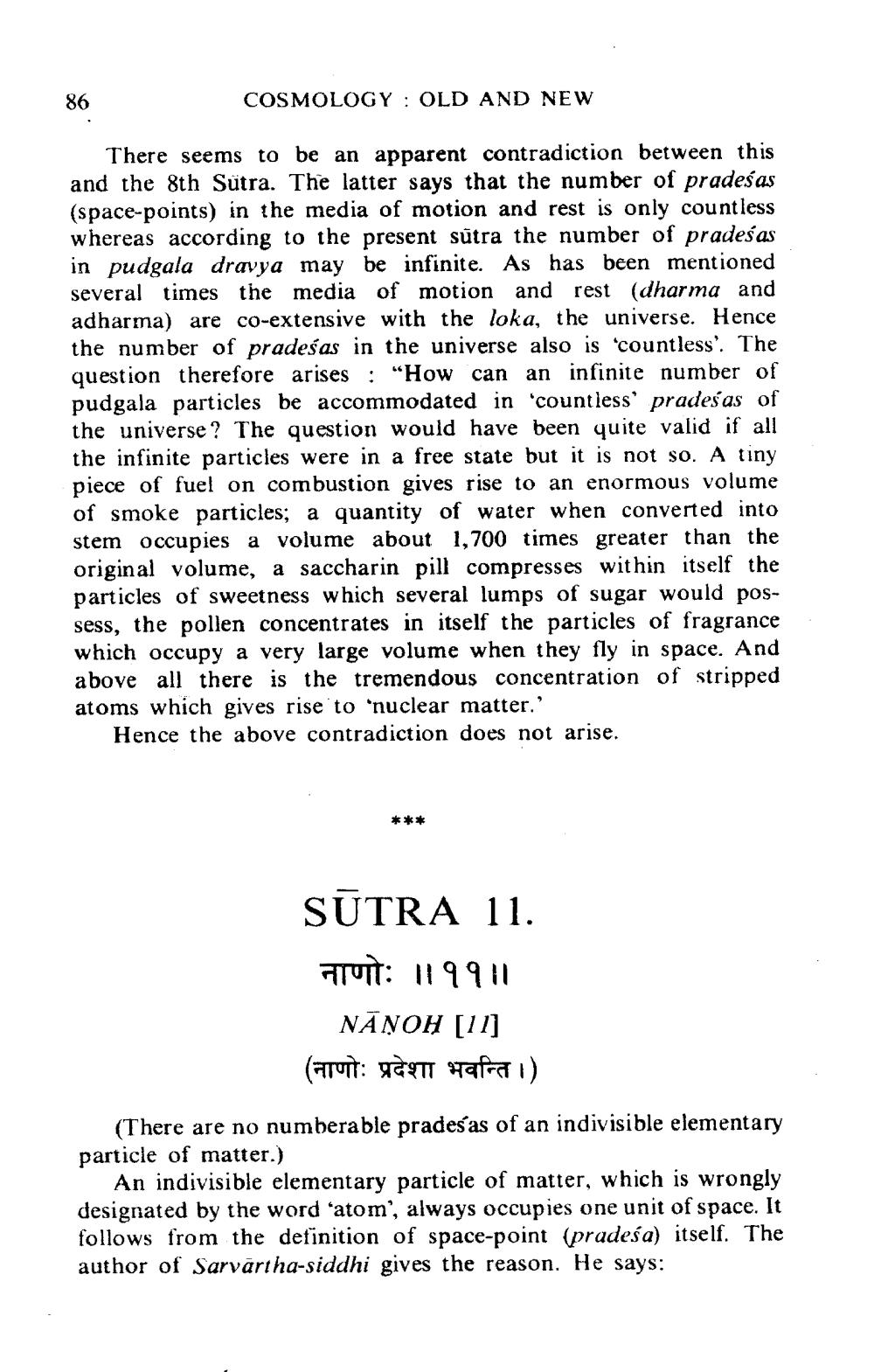________________
86
COSMOLOGY OLD AND NEW
There seems to be an apparent contradiction between this and the 8th Sutra. The latter says that the number of pradeśas (space-points) in the media of motion and rest is only countless whereas according to the present sutra the number of prades as in pudgala dravya may be infinite. As has been mentioned several times the media of motion and rest (dharma and adharma) are co-extensive with the loka, the universe. Hence the number of pradešas in the universe also is 'countless'. The question therefore arises: "How can an infinite number of pudgala particles be accommodated in 'countless' prades as of the universe? The question would have been quite valid if all the infinite particles were in a free state but it is not so. A tiny piece of fuel on combustion gives rise to an enormous volume of smoke particles; a quantity of water when converted into stem occupies a volume about 1,700 times greater than the original volume, a saccharin pill compresses within itself the particles of sweetness which several lumps of sugar would possess, the pollen concentrates in itself the particles of fragrance which occupy a very large volume when they fly in space. And above all there is the tremendous concentration of stripped atoms which gives rise to nuclear matter.'
Hence the above contradiction does not arise.
***
SUTRA 11.
art: 119911
NĀNOH [11] ( नाणोः प्रदेशा भवन्ति । )
(There are no numberable prades as of an indivisible elementary particle of matter.)
An indivisible elementary particle of matter, which is wrongly designated by the word "atom', always occupies one unit of space. It follows from the definition of space-point (pradeśa) itself. The author of Sarvārtha-siddhi gives the reason. He says:




